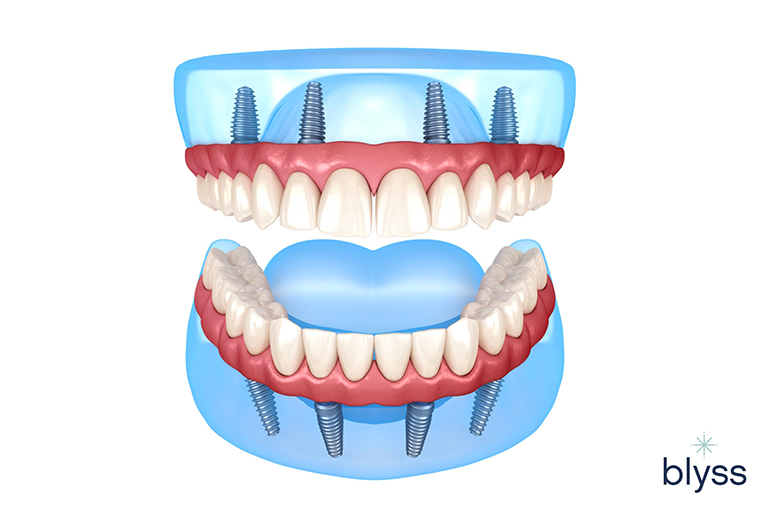Unknown Facts About Dental Sense
Table of ContentsDental Sense for DummiesDental Sense Things To Know Before You Get ThisDental Sense Things To Know Before You BuyThe smart Trick of Dental Sense That Nobody is Discussing
are clinical devices surgically implanted right into the jaw to restore an individual's ability to eat or their look. They offer assistance for fabricated (phony) teeth, such as crowns, bridges, or dentures. When a tooth is shed due to injury or illness, a person can experience issues such as quick bone loss, malfunctioning speech, or adjustments to eating patterns that lead to pain.Dental dental implant systems consist of an oral implant body and dental implant abutment and might likewise consist of an abutment addiction screw. Same day dental implants. The oral implant body is operatively put in the jawbone in location of the tooth's origin. The oral implant joint is normally affixed to the dental implant body by the joint fixation screw and prolongs through gum tissues into the mouth to support the affixed synthetic teeth
(https://www.goodreads.com/user/show/186244556-matthew-music)Structure of The Oral Implant System picking dental implants, talk with your oral provider about the possible benefits and dangers, and whether you are a prospect for the procedure. Things to take into consideration: Your overall health and wellness is a crucial aspect in establishing whether you are an excellent candidate for dental implants, exactly how long it will require to recover, and for how long the implant may remain in place.
Smoking might affect the recovery process and decrease the long-term success of the implant. The healing procedure for the implant body might take numerous months or longer, during which time you usually have a short-term joint in place of the tooth. the oral implant treatment: Meticulously adhere to the dental health guidelines provided to you by your dental supplier.
Top Guidelines Of Dental Sense
Implant failure can cause the requirement for another surgical treatment to repair or change the implant system. Recovers the ability to eat Restores aesthetic look Helps maintain the jawbone from diminishing as a result of bone loss Preserves the health and wellness of the surrounding bone and gum tissues Helps keep surrounding (nearby) teeth secure Boosts lifestyle Damages to bordering all-natural teeth throughout implant positioning Injury to the surrounding tissues throughout surgical treatment, such as sinus perforation Injury during surgical procedure (as an example, fracture of surrounding jawbone) Inadequate function, such as seeming like the teeth do not attack with each other usually A feeling that the tooth is loose or twisting in position resulting from a joint screw loosening up Implant body failure (looseness of the implant body) as a result of systemic infection, which may be a lot more likely in clients with uncontrolled diabetes as a result of local infection in bone and periodontals sustaining the dental implant body due to delayed healing, which may be most likely in people that smoke Trouble cleaning up the gum tissues around the dental implant, resulting in poor oral health Unattended periodontal condition Post-surgical tingling due to nerve impingement or damage Constantly alert healthcare carriers and imaging professionals that you have dental implants before any kind of magnetic vibration imaging (MRI) or x-ray treatments.
FDA is not knowledgeable about any type of adverse events reported for MRI or x-ray treatments with oral implants. Dental implants systems are typically constructed from materials that follow international consensus standards of the International Organization for Standardization (ISO) or ASTM International. These criteria have details of what makes a safe material.

A dental implant is a structure that changes a missing tooth. With screw-like gadgets, the specialist inserts an implant right into the jawbone, and it serves as a support for an artificial tooth, called a crown. A gadget called an abutment links the man-made tooth to the dental implant. The crown is personalized to fit the individual's mouth and match the shade of their teeth.
Dental Sense - Questions
Some people are not eligible for dental implant surgical treatment. It is for oral doctors to operate individuals with: acute illnessuncontrollable metabolic diseasebone or soft cells condition or infectionIf these issues are resolved, a person can have the surgical procedure. In, dental surgeons refrain from operating people with: If people with any of the above go through oral implant surgical treatment, there is a higher threat of the implant failing.

Dental dental implant surgical procedure is a personalized process. It's not the same for every person. The adhering to gives a general review of what you can expect your dental expert, dental surgeon, periodontist or prosthodontist to do: Place the dental implant surgically. Offer you time to recover. Attach the message and final crown, bridge or denture.
Next, your specialist will thoroughly place the dental implant into your jaw. Your specialist will certainly reposition your gum tissues and close the cut with stitches. If your dental implant is near the front of your mouth, your dental expert will make a short-lived tooth for you to put on until you heal. This way, you will not have a space in your smile while you recuperate.
The Facts About Dental Sense Revealed
Your provider can inform you what to expect in your scenario. During the healing phase, your jawbone should fuse to the dental implant. This process, called osseointegration, is vital for security and long-lasting success. This procedure can take anywhere from three to nine months. In some situations, it might take longer.
When your dental implant heals, your dental practitioner can affix the abutment (small adapter article) and your final remediation (crown, bridge or denture). This normally takes about one hour to complete and may require a 2nd small surgical treatment. You shouldn't really feel any type of discomfort during your oral implant treatment since your company will use drug to numb your periodontals.
 Tatyana Ali Then & Now!
Tatyana Ali Then & Now! Melissa Joan Hart Then & Now!
Melissa Joan Hart Then & Now! Brooke Shields Then & Now!
Brooke Shields Then & Now! Barbara Eden Then & Now!
Barbara Eden Then & Now! Rossy de Palma Then & Now!
Rossy de Palma Then & Now!